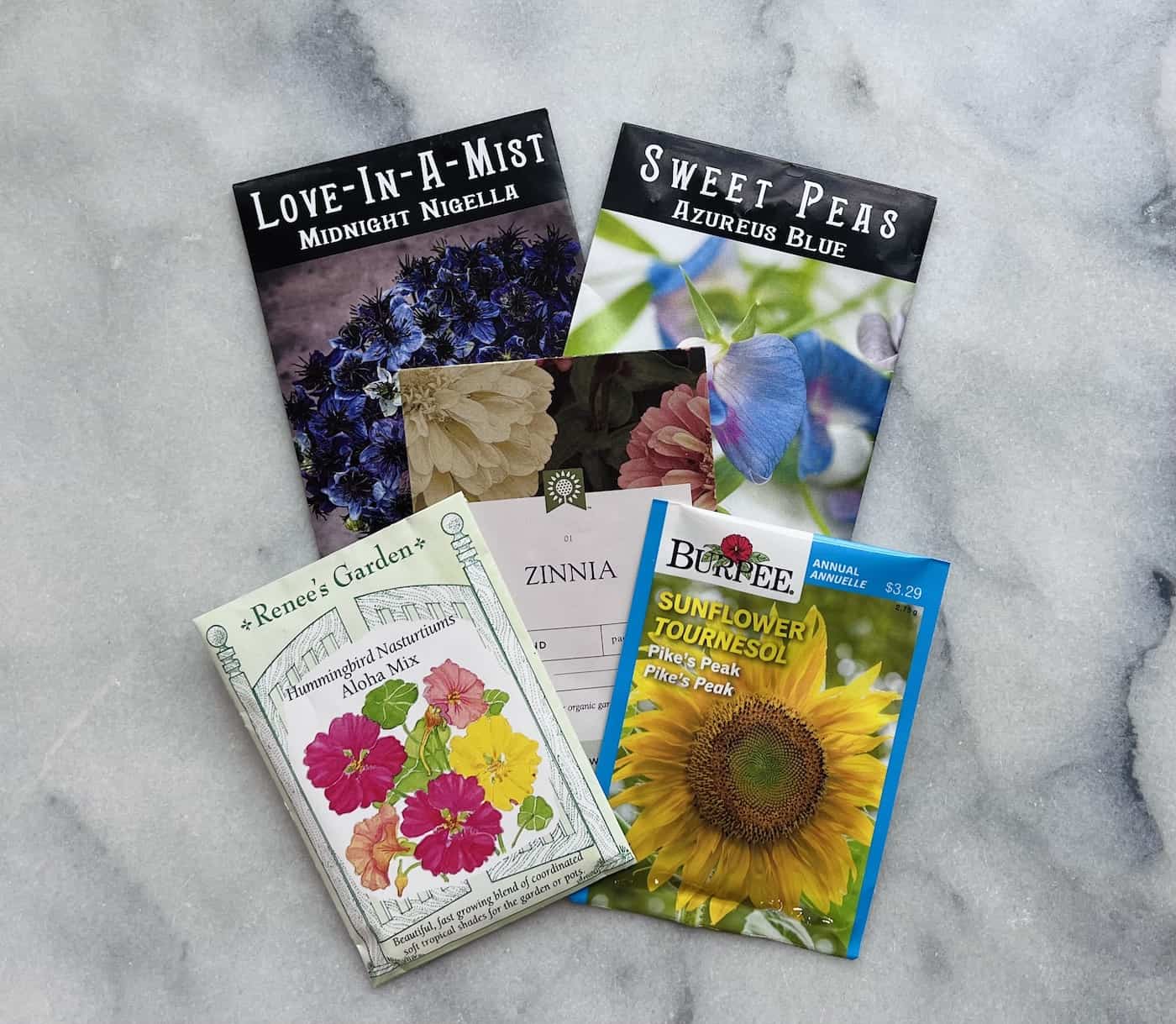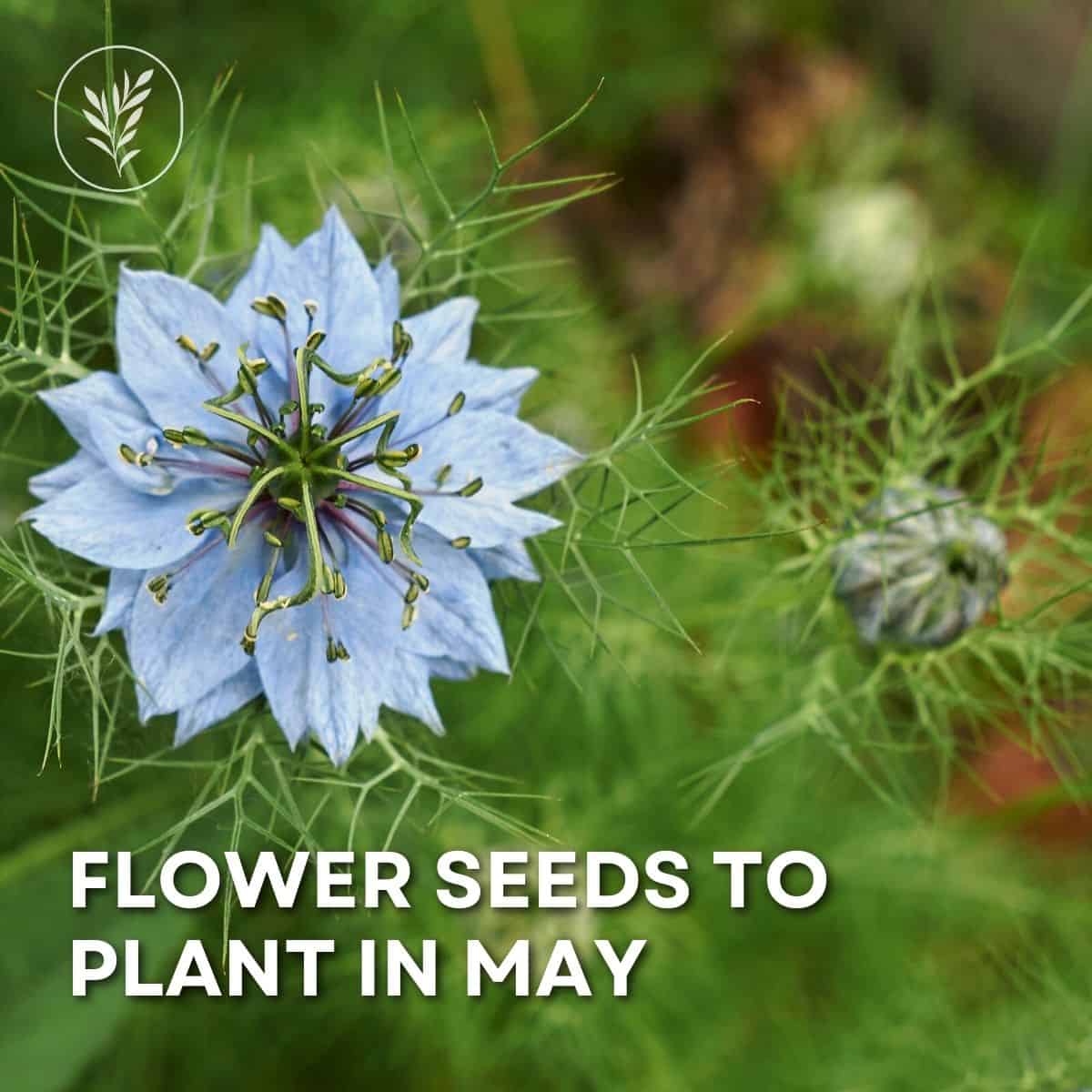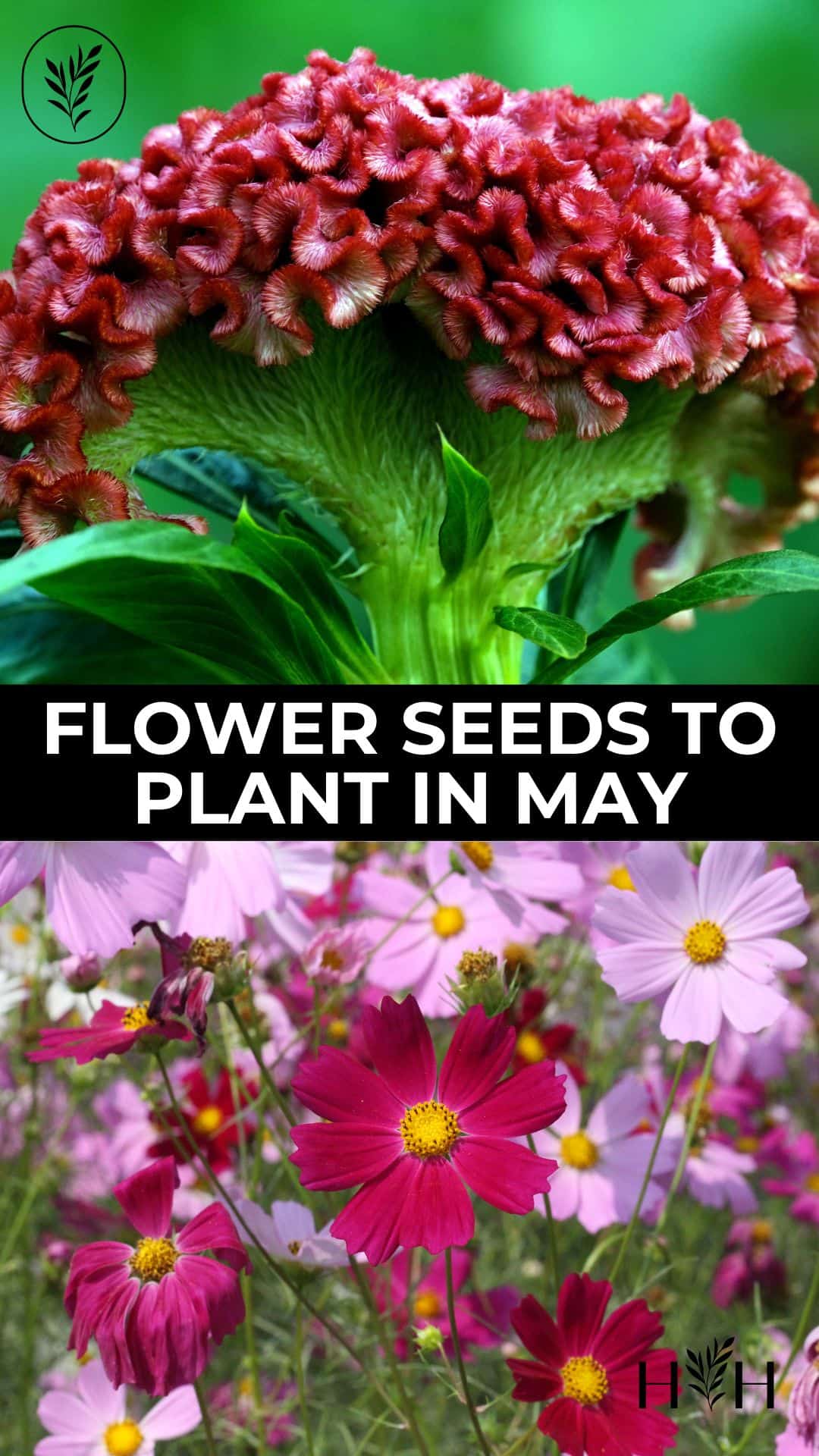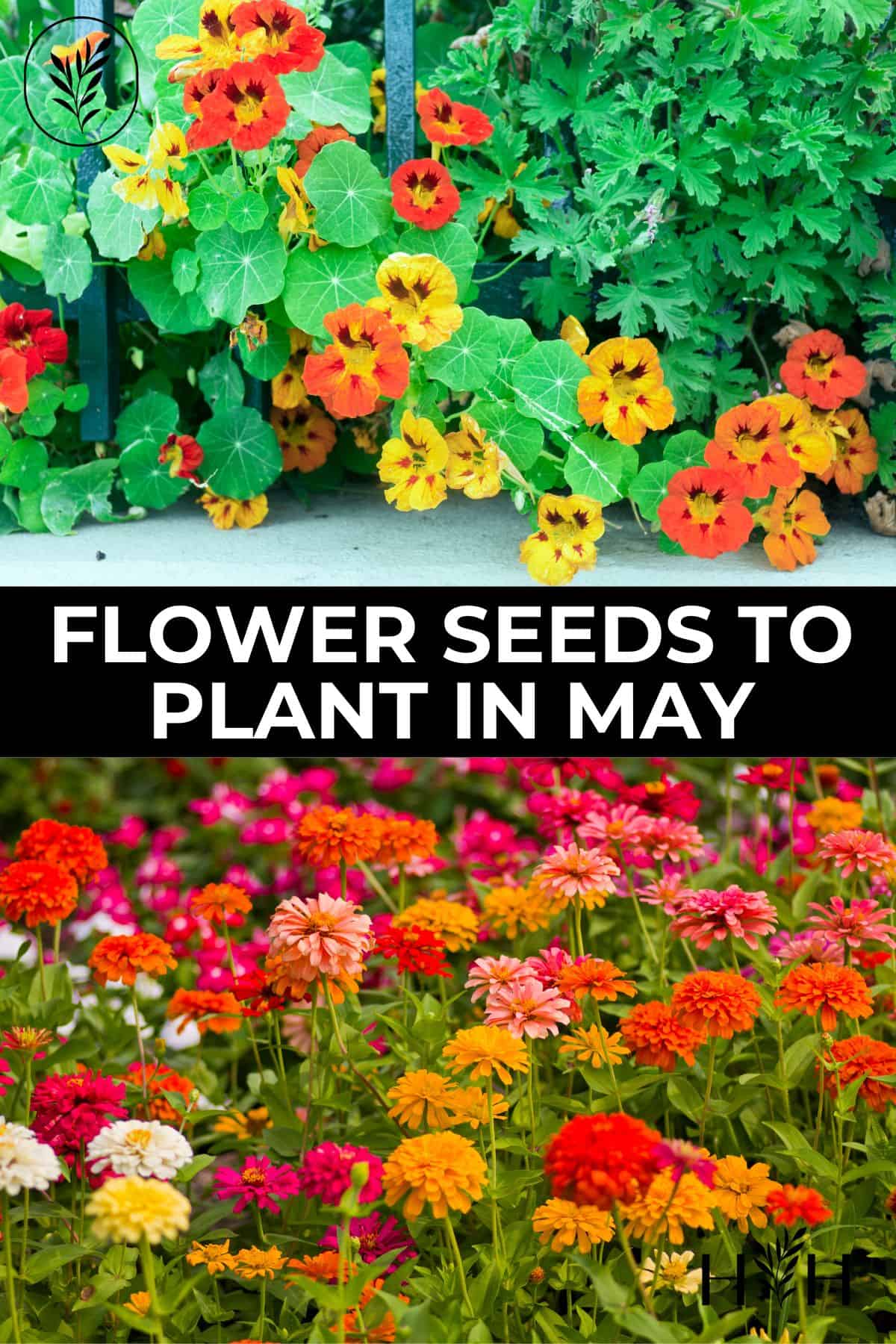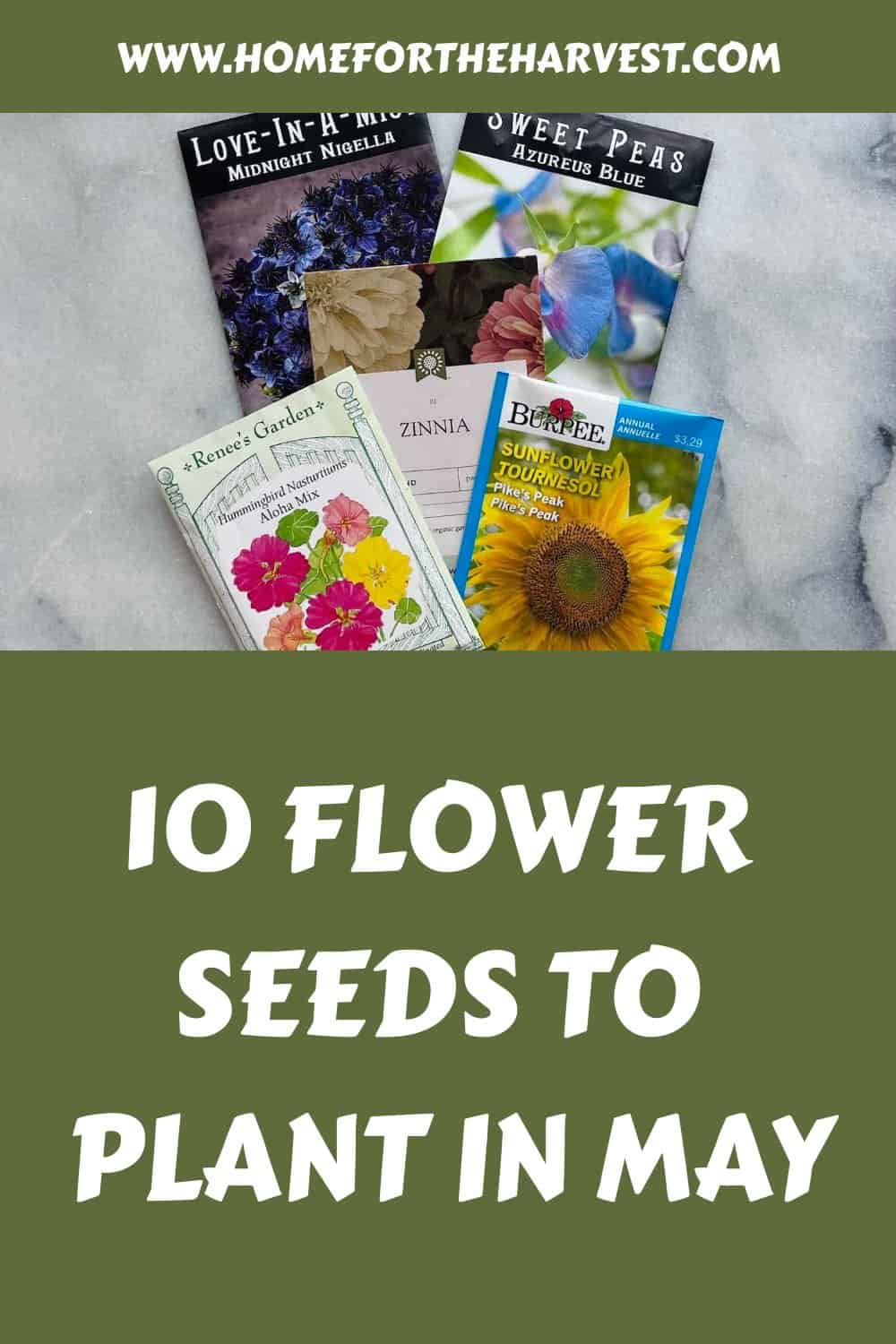From sunflowers and nasturtiums to zinnias and celosia, there are so many beautiful flower seeds that you can plant in May. With the right preparation, you can have your garden bursting with vibrant blooms all summer. Let’s look through some of our top picks for flowering plants this month – from sweet peas and chamomile to verbena and marigold – get ready for a colorful season ahead.
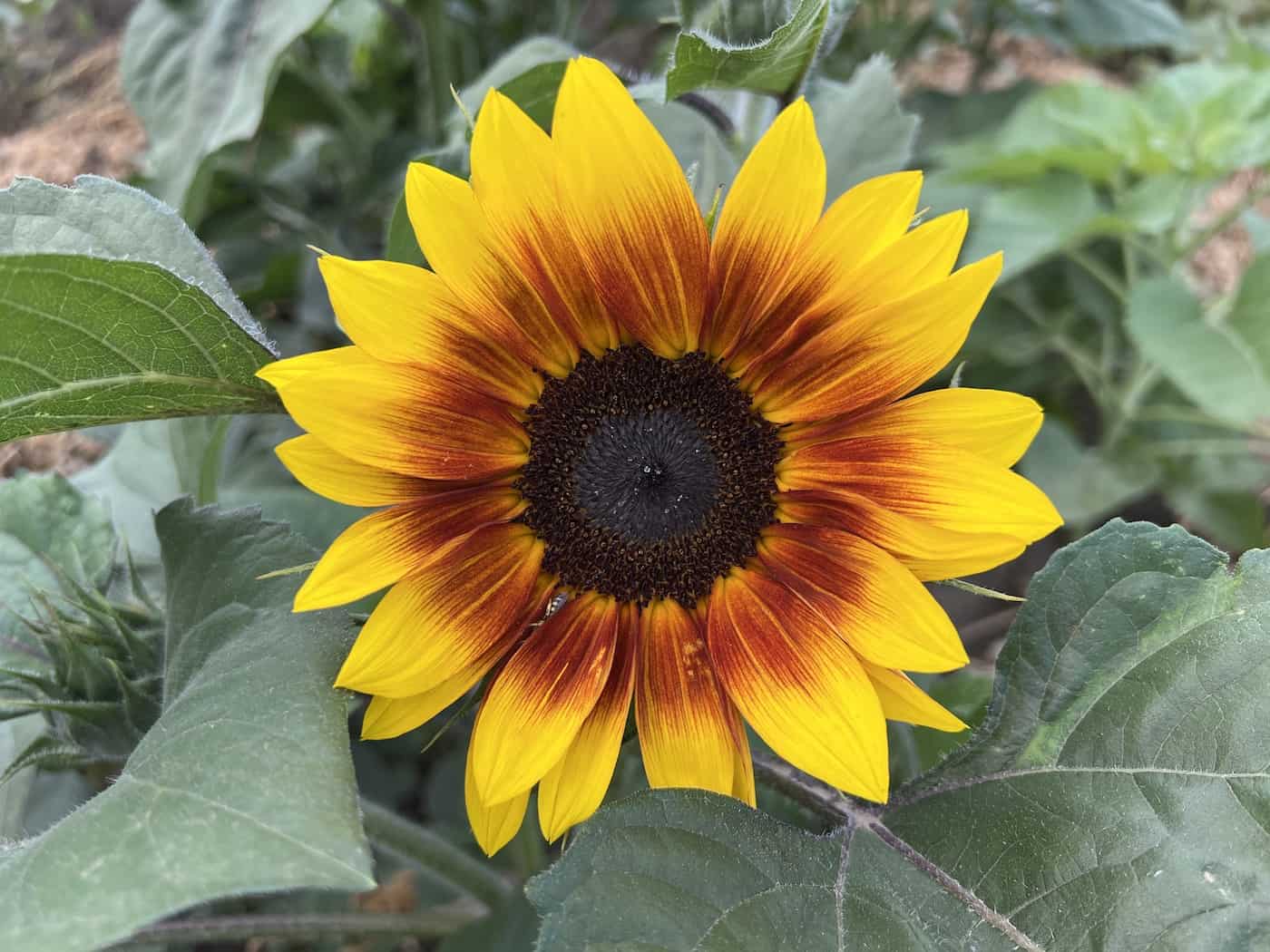
1. Sunflower
Sunflowers are a bright and cheerful addition to any garden. With their bold yellow petals, they bring sunshine and cheer wherever they’re planted. Not only do sunflowers bring brightness and cheer to a garden, but they also attract beneficial pollinators such as bees and butterflies that help other plants flourish. Plus, you can even eat the seeds of some varieties. Sunflowers are an ideal option for novice gardeners who wish to enliven their outdoor space with a vibrant display.
Next is deciding when and where to plant them; most sunflowers prefer full sunlight, so pick a spot that gets at least six hours per day during peak growing season (May through September). You should also remember how tall your chosen variety grows, as some can reach heights of 8 feet or more.
Finally, once your seedlings have sprouted, it is important not to forget about watering them regularly – especially if temperatures soar into triple digits during summertime heat waves. Sunflowers require plenty of water, so give them 1-2 inches per week throughout their growing period until just before flowering begins (about three weeks prior). Additionally, fertilize every two weeks with an all-purpose fertilizer or compost tea mixture for best results; this helps ensure healthy growth and abundant blooms come harvest time.
Sunflowers are an ideal choice for any garden, adding a cheerful splash of yellow to the landscape. With their bright yellow petals, they will bring life and color to your outdoor space. Nasturtiums offer a range of radiant hues, such as scarlet, tangerine, lemon-yellow, rose, and ivory – ideal for adorning your garden or enhancing culinary creations.
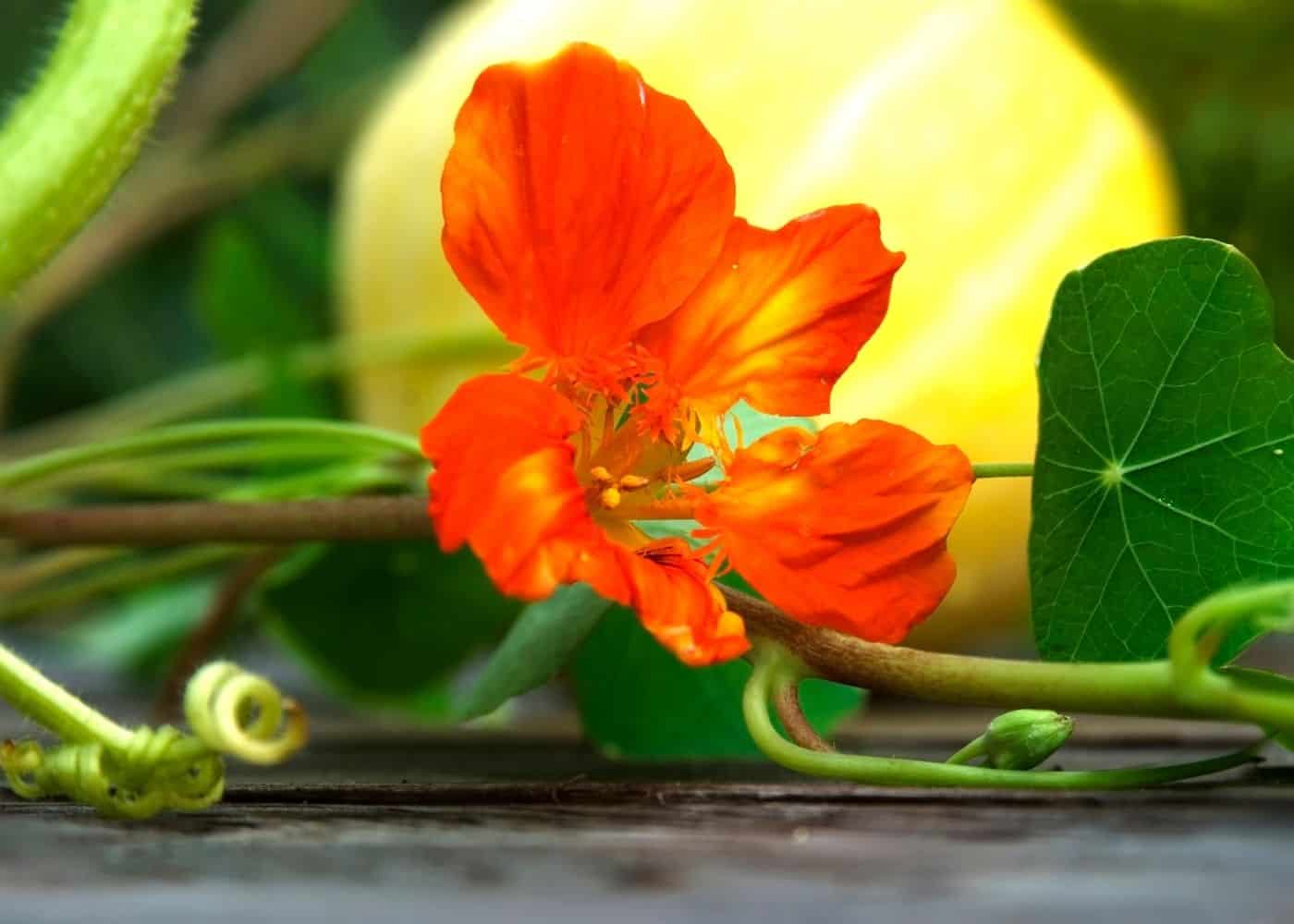
2. Nasturtium
Nasturtium is an easy-to-grow annual flower that will bring a splash of color to any garden. Its bright and cheerful blooms make it the perfect addition for those looking to add some vibrancy to their outdoor space. Blooms in vibrant hues, from sunny yellows to fiery oranges and passionate pinks, make nasturtiums a cheerful addition to any garden.
Nasturtiums are known for being heat tolerant and can survive in poor soil conditions with little water. They thrive best when planted in full sun but can also do well in partial shade. Nasturtiums should be planted with enough space to reach a maximum of three feet in height.
Nasturtiums are perfect for novice gardeners who desire an attention-grabbing display without investing too much energy into tending or upkeep. Once established, these flowers require minimal care – ensure they get enough sunlight and water occasionally during dry spells.
Nasturtiums are a great choice for adding vibrant color to any garden in May, and they’re easy to grow. Zinnias provide even more options for bringing bold colors into the garden this month.
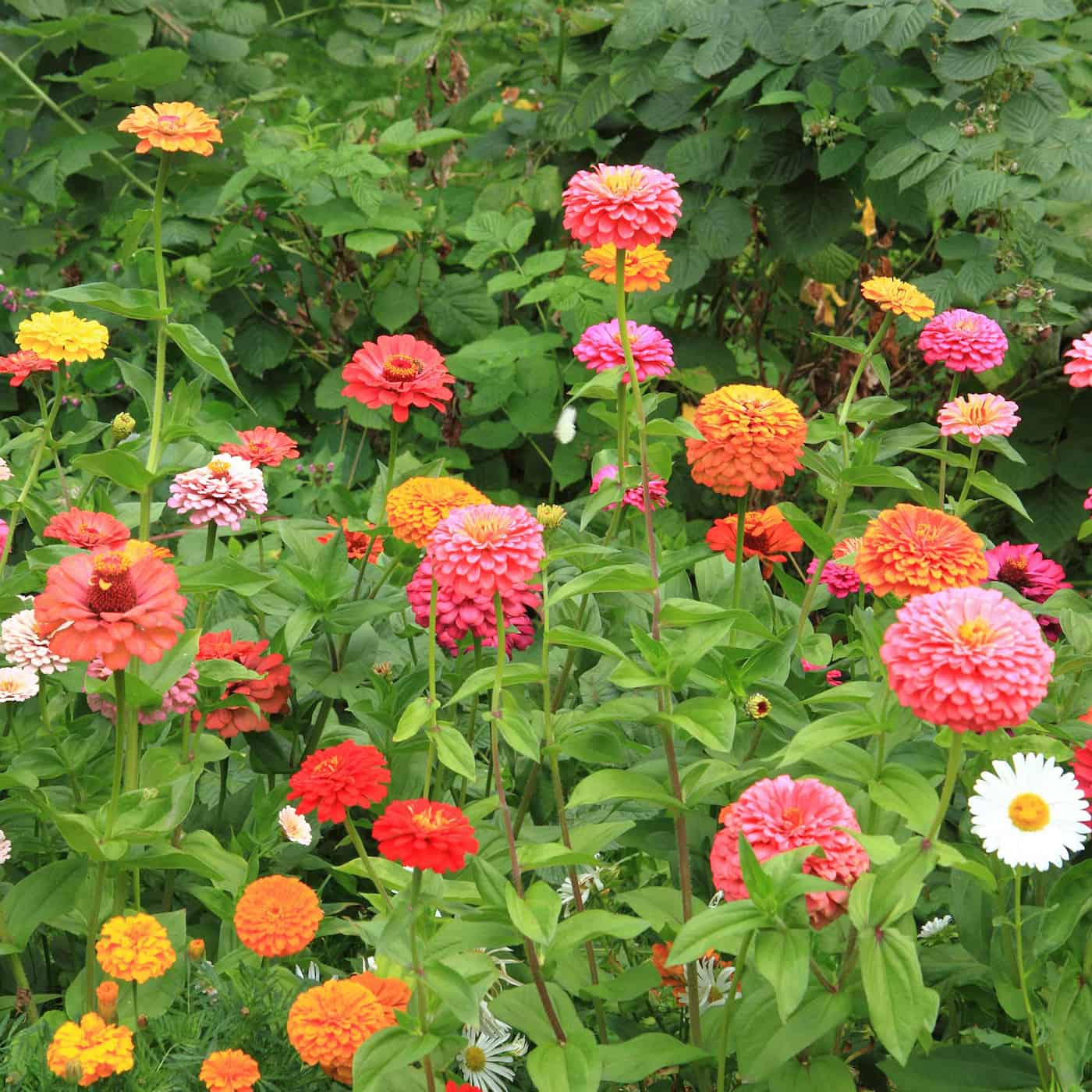
3. Zinnia
Zinnia, a simple-to-cultivate annual blossom, can bring any garden to life. These vivid blooms, resembling daisies, offer a spectrum of hues and sizes to enliven any summertime or perennial garden. Zinnias are also known for attracting butterflies and bees, which makes them great additions to vegetable plots or kitchen gardens.
Starting zinnia seeds indoors is one of the easiest gardening jobs. Start by filling seed trays with fertile soil and sowing the seeds according to packet instructions. Once they have sprouted, transfer young plants into larger containers before planting directly into your flower beds when all danger of spring frost has passed (check your local frost date). Planting after late spring gives you continuous crops throughout summer until late autumn when cool weather arrives again.
Zinnias are beautiful flowers to plant in May, and they can provide vibrant color for your garden. Celosia is another great option for adding beauty and texture to your outdoor space.
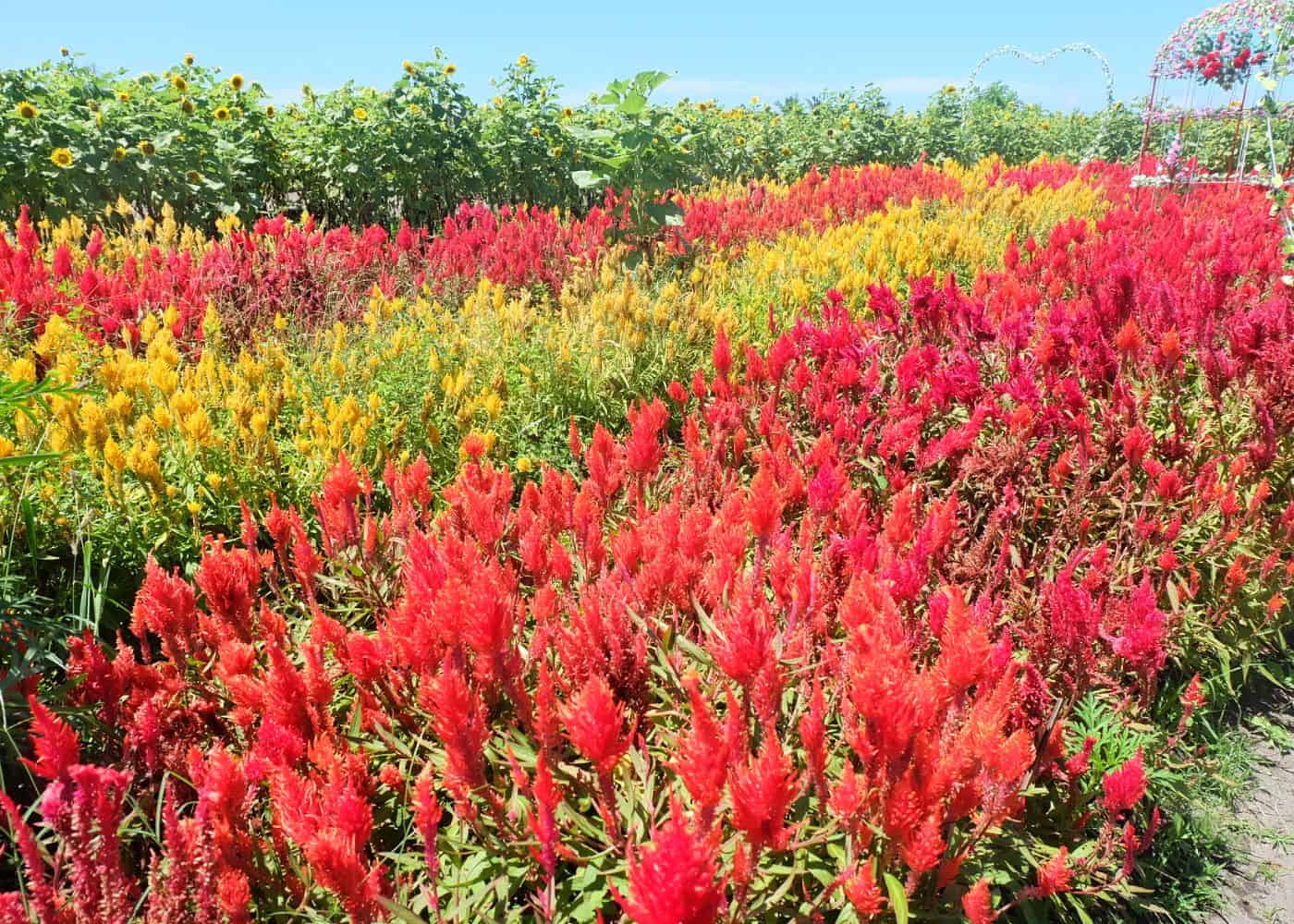
4. Celosia
Celosia is a beautiful, vibrant flower that adds flair to your garden. This low-maintenance annual can be grown in many climates and requires minimal care. With its bright colors and interesting shapes, it’s sure to attract attention from visitors.
Celosia comes in two main varieties: cockscomb and plume. Cockscomb celosia features an eye-catching array of velvety petals arranged in a comb shape, while plume celosia has feathery blooms that look like fluffy tufts of cotton candy. Both types are available in shades ranging from pale pink to deep red or purple.
When planting celosia, choose a spot with plenty of sunlight—at least six hours per day—and well-draining soil for best results. Water the plant regularly during dry periods but don’t overwater, as this can cause root rot or other issues with growth. Fertilize once every few weeks using an all-purpose fertilizer or one specifically designed for flowers; follow the instructions on the package for proper application rates and timing. Remove any dead blossoms regularly so new ones can take their place to keep plants healthy throughout the growing season.
Celosia is a beautiful flower that adds vibrant color to any garden and thrives in the summer heat. Next, let’s look at Cosmos, easy-to-grow annuals with bright daisy-like flowers.
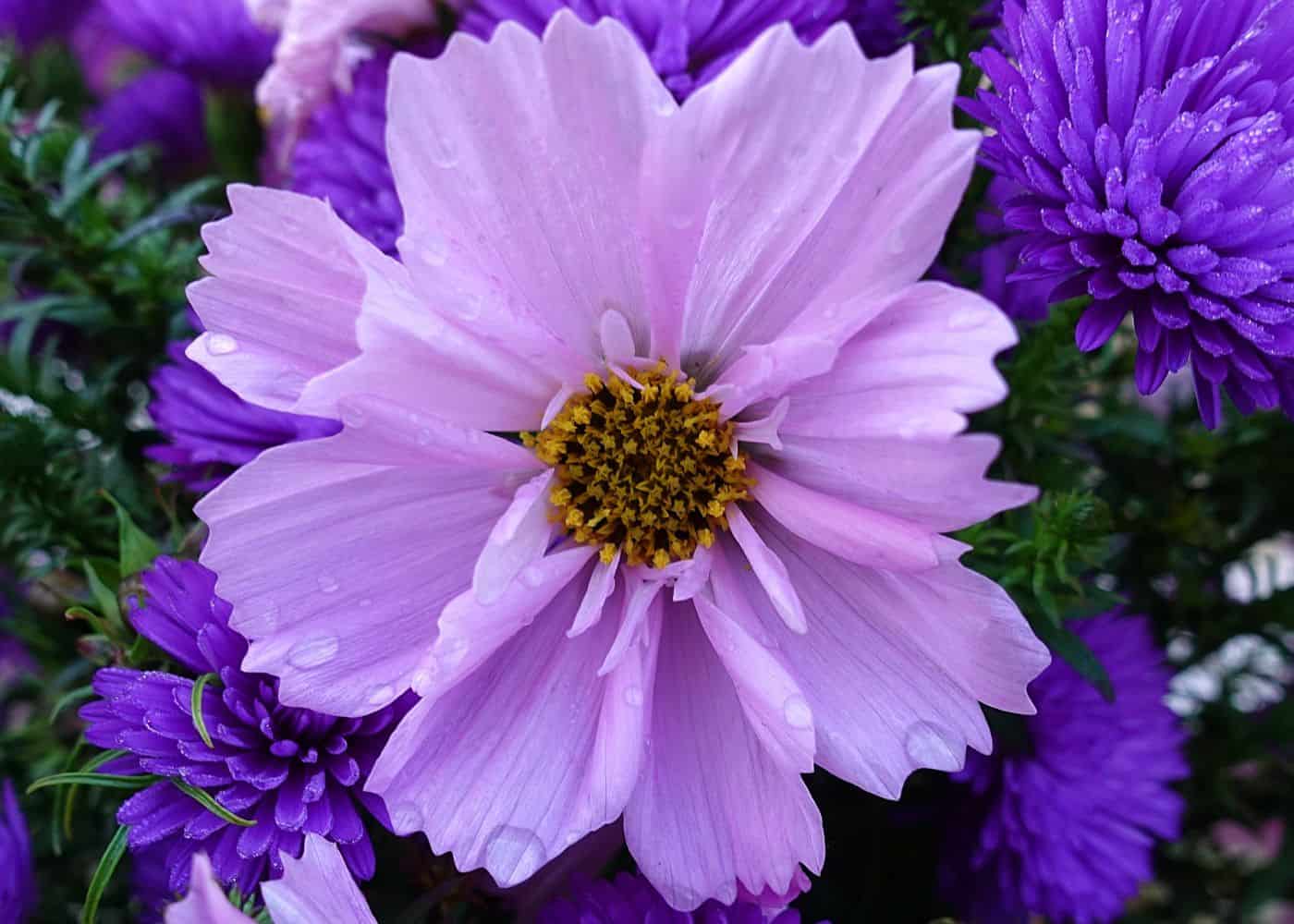
5. Cosmos
Cosmos is an excellent flower for North American gardeners who want a reliable and easy-to-care-for bloomer. This cheerful annual has daisy-like flowers in shades of pink, white, purple, and yellow. Cosmos are also drought tolerant and can withstand some neglect without wilting away.
Plant cosmos in full sun or partial shade with well-draining soil; they will thrive even in poor soils with enough water to keep them hydrated. Deadhead spent blooms regularly to encourage more flowering throughout the season—a task easily done with just your fingers.
The feathery foliage gives off an airy feel, while the petals look like tiny stars sprinkled across the sky at night. For gardeners looking for something different than traditional daisies or marigolds, cosmos are an ideal choice. They’re incredibly versatile, too—you can use them as cut flowers indoors, let them spill over planters on your porch or patio, or create lovely cottage gardens filled with these cheerful blooms.
Cosmos is a great flower to plant in May, producing bright and cheerful blooms throughout summer. For something more delicate, Nigella is an excellent choice for those looking for a subtle splash of color in their garden.
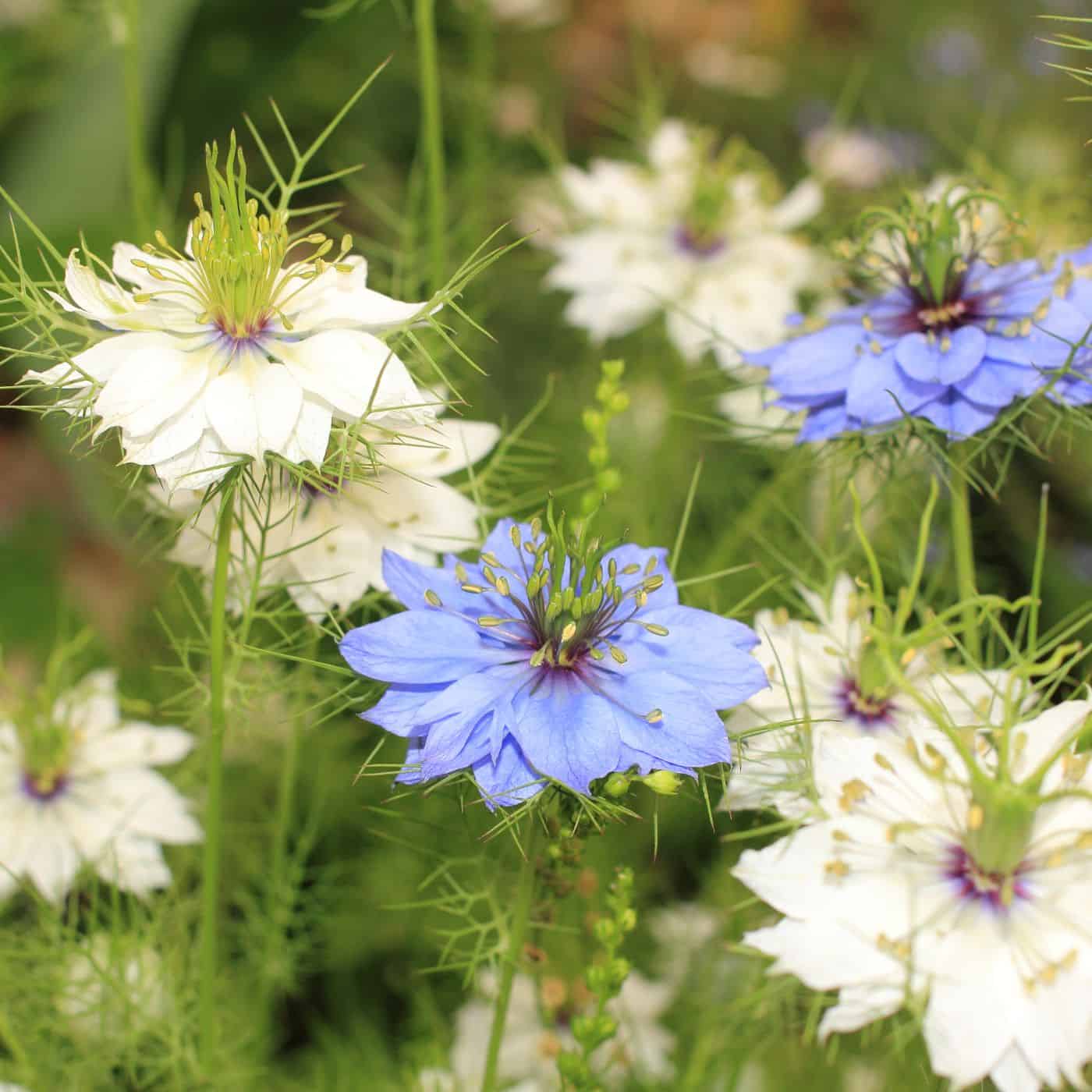
6. Nigella
Nigella, also known as love-in-a-mist, is a popular annual flower that adds an interesting touch to any garden. Its attractive foliage and colorful blooms in various hues make Nigella an ideal choice for adding texture and vibrancy to any garden. It’s easy to grow from seed and can be planted in full sun or partial shade. Nigella grows quickly and blooms throughout the summer months until frost arrives. The best part about this plant is that it doesn’t require much maintenance; give it regular watering and occasional fertilizing during the growing season for the best results.
Nigella is a great addition to cottage gardens, meadows, or containers on your patio or balcony. It looks especially lovely with bright colors like marigolds, zinnias, or cosmos flowers. For an extra pop of color, try adding some nasturtiums with similar colors but more vibrant hues than Nigella’s soft pastels. If you’re looking for something different than traditional flowering plants, consider using love-in-a-mist as an accent piece in your garden design – its delicate beauty will draw attention.
For those who are short on time but still want a beautiful garden display, then nigella is perfect because, once established, it requires minimal care beyond the regular watering and weeding around the base of the plant (especially if grown in containers). Additionally, since they reseed themselves each year, there’s no need to worry about replanting them every spring – just let nature take its course. Plus, these sturdy flowers can take on both hot and cold conditions, making them perfect for the ever-changing temperatures of North America.
Nigella, a stunning bloom for summertime, and sweet peas – an uncomplicated plant to bring vibrancy to any garden.
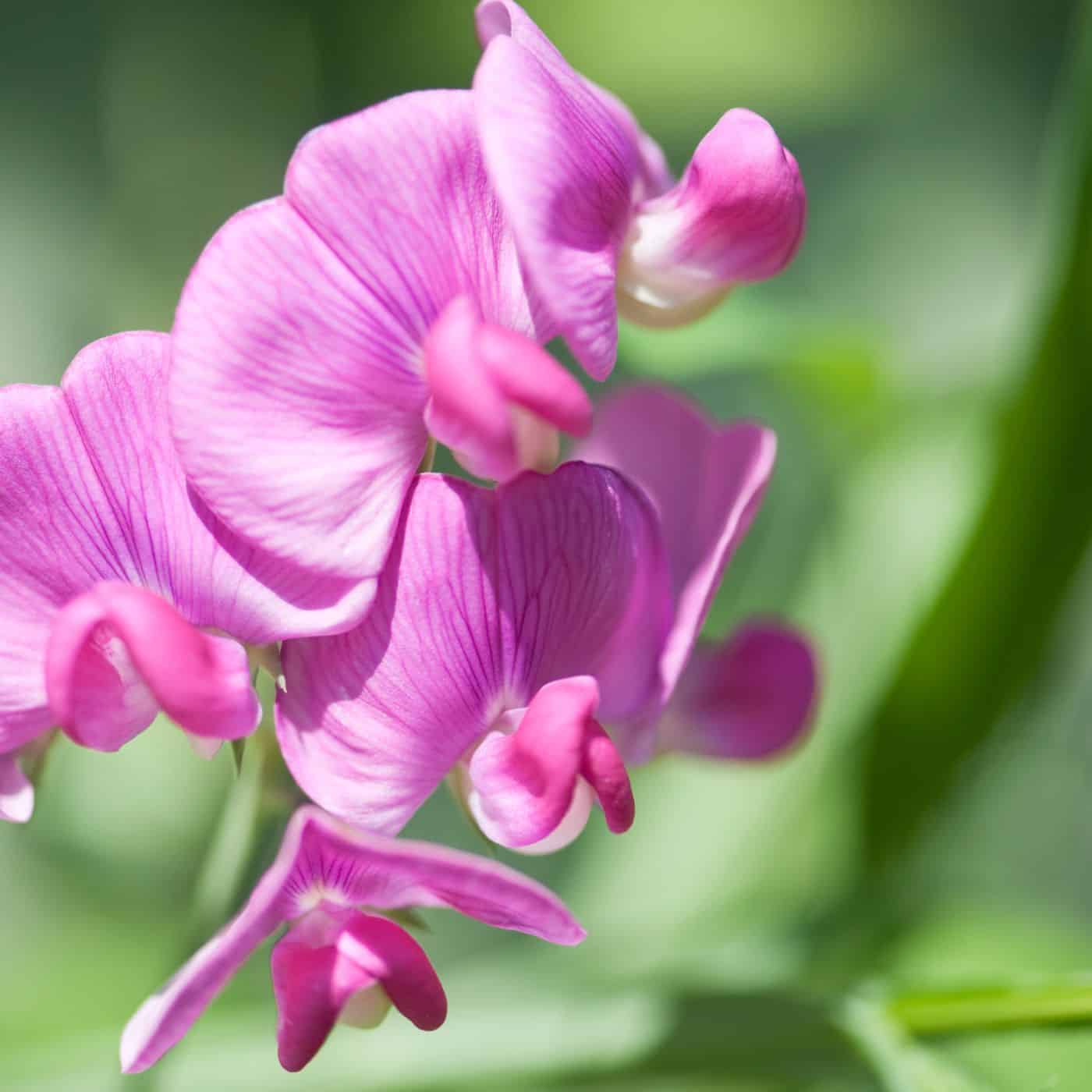
7. Sweet peas
Sweet peas are an old-fashioned favorite for many gardeners. With their delightful fragrance and bright colors, these beautiful flowers bring a sense of nostalgia to the garden. Sweet peas present a spectrum of colors, ranging from white to pink, red, purple, and even yellow. They can be grown as annuals or perennials, depending on your climate.
When planting sweet peas, they prefer full sun but will tolerate some shade. Soil should be well-draining with plenty of organic matter before planting; this will help retain moisture during dry spells while allowing good drainage when needed. Planting depth should be 1–2 inches (3–5 cm) deep with seeds spaced 2–4 inches (5–10 cm) apart in rows that are 12–18 inches (30–45 cm) apart; thinning is recommended if plants become overcrowded later on in the season.
Once planted, keep the soil moist but not soggy until seedlings emerge, then water regularly throughout the growing season – about 1 inch per week is ideal – using soaker hoses or drip irrigation systems for best results; mulch around plants to conserve moisture and reduce weeds too. Fertilize every few weeks with a balanced fertilizer.
If all goes according to plan, you’ll have fragrant sweet pea blossoms gracing your garden from late spring through early fall – a delightful sight. Remember to deadhead spent flowers by cutting them off at the base of each stem to encourage more blooms and prevent self-seeding unless you’re looking for volunteers next year. Also, don’t forget to pinch back stems, promoting bushier growth. With these simple steps, you can look forward to enjoying beautiful sweet peas in your garden.
Sweet peas are a beautiful and fragrant flower that can be planted in May for an eye-catching display. Moving on, chamomile is another great choice to plant this month for its delicate blooms and calming scent.
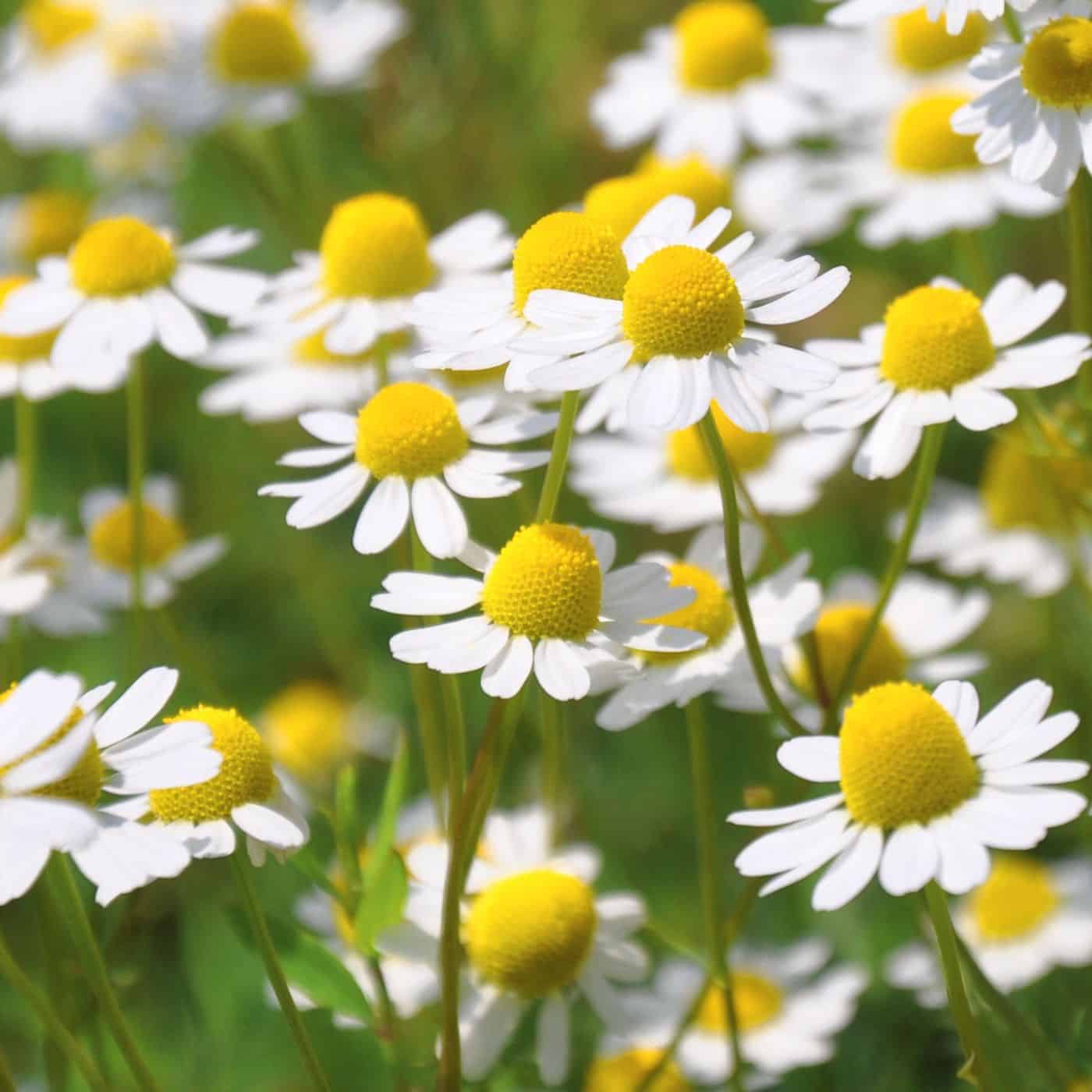
8. Chamomile
Chamomile is an annual flower that’s easy to sow and grows quickly. Its daisy-like flowers add a cheerful touch to any garden or flower bed. Seeds require light for germination, so don’t cover them with soil – press them into the tray’s surface. Once young plants are established, they can be planted directly outdoors after all danger of frost has passed.
For continuous blooms throughout summer and late summer into fall, sow a new batch of seeds every few weeks until late spring, when you can plant directly outdoors without fear of frost damage. If you have fertile soil and good growing conditions (including plenty of sunshine), these hardy perennials will reward you with lots of blooms over several months – perfect for attracting butterflies and bees to your vegetable plot or kitchen garden.
Chamomile – an easy-to-cultivate blossom, can bring a delightful splash of color to your garden during the summertime. Next, explore Verbena and how it can add color to your garden.
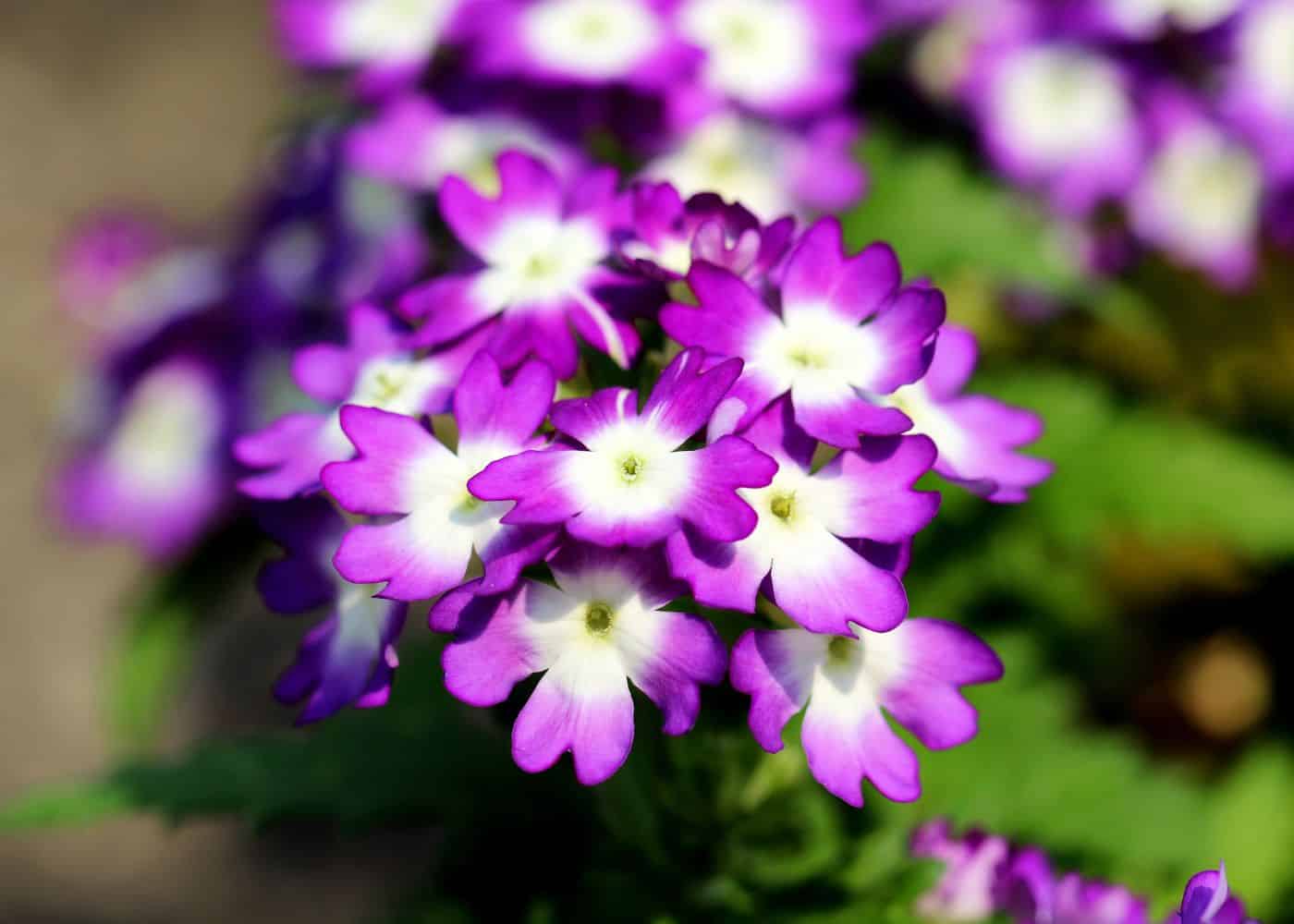
9. Verbena
Verbena is a beautiful and hardy flower. Verbena can be planted in sunny and shady spots, so you don’t need to fret over where it goes; it’ll do well regardless of the conditions. Verbena comes in many different colors, including purple, pink, white, and red; there are even some varieties with variegated leaves for added interest. The blooms are tiny but abundant, creating a lush carpet of vibrant color that lasts all summer long.
Verbena is low-maintenance once established. The plants require little attention other than occasional deadheading or pruning after the flowering season has ended. Ensure your verbena plants thrive by planting them in soil with a good drainage system and plenty of organic matter for nourishment. Water them deeply at least once weekly during dry spells; more frequent watering may be necessary if temperatures soar above 90°F (32°C). Fertilizing during active growth periods every few weeks will help keep your verbenas healthy and vigorous throughout the growing season.
Snip off 4″ (10 cm) sections near the base of each stem for cuttings, and these should take root quickly depending on the temperature and humidity. For harvesting flowers from your verbena plants, clip stems just below where the bloom meets the stem to encourage more blooms and extend their life span by preventing premature seed formation.
Verbena is also a great companion plant because it attracts beneficial insects such as pollinators while repelling pests like aphids away from nearby vegetables or fruits. This is thanks to its strong scent profile, which contains terpenes, giving off fragrant aromas naturally found within this species’ foliage and flowers. Verbena makes perfect additions to any home gardener’s arsenal against pesky bugs invading their prized produce patches.
Verbena is a beautiful and versatile flower that can be planted in May for vibrant blooms throughout the summer. Conversely, Marigold is an easy-to-grow annual with bright colors and strong scents to attract beneficial insects.
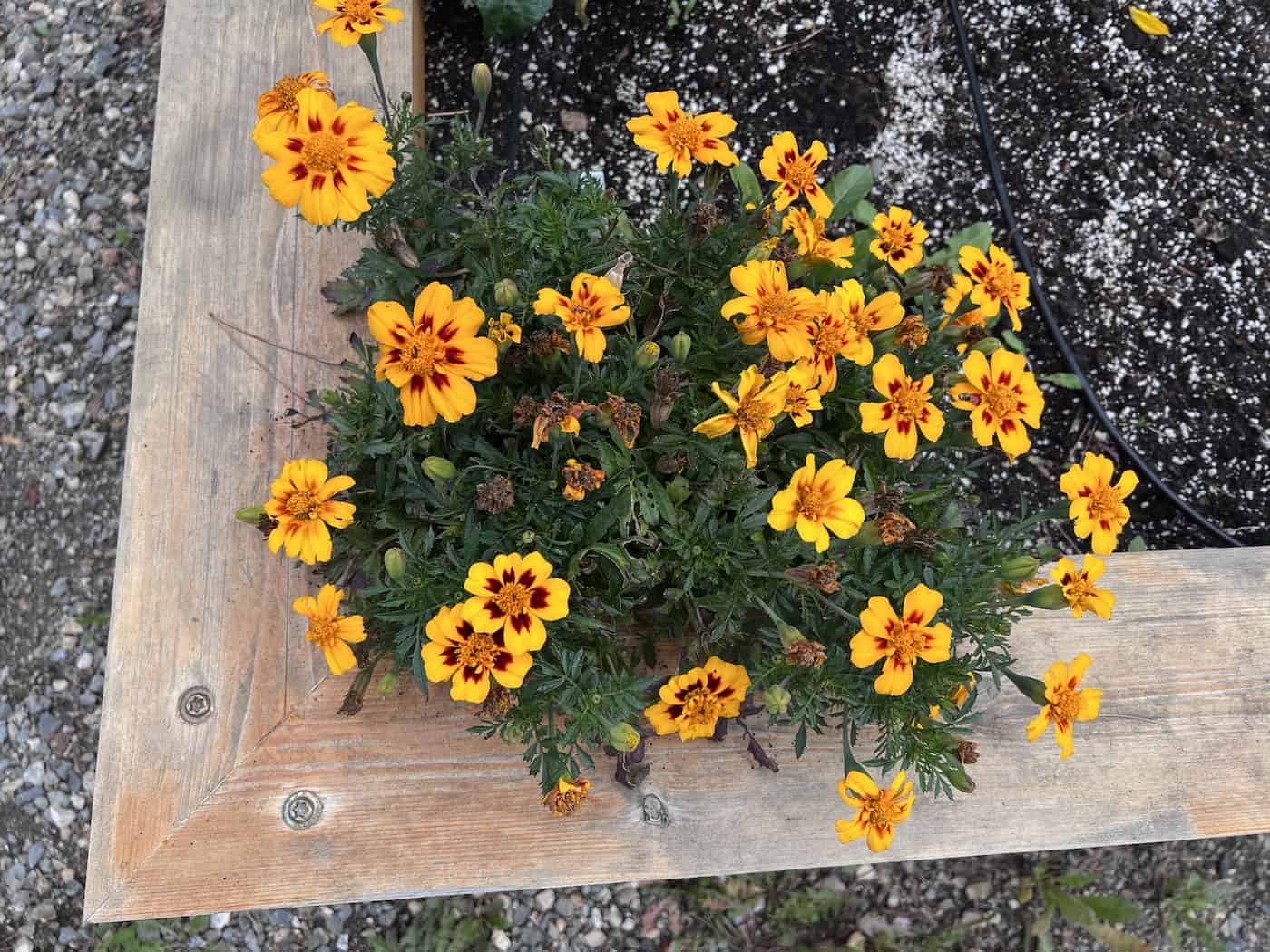
10. Marigold
Marigolds, a popular annual flower in North America, come in various colors and sizes to add beauty to gardens or containers. These vibrant daisy-like blossoms come in a wide selection of hues and sizes, making them an effortless way to add charm to your garden beds or containers. They’re also quite hardy perennials that can tolerate frost and grow quickly during the growing season.
To get started with marigold seeds indoors, you’ll need seed trays, soil, water, and light. Sow the seeds by scattering them atop the soil in each tray, then lightly bury them with more dirt. Some marigold seeds require light for germination, so read your seed packet before sowing. Water regularly until young plants emerge, then thin out overcrowded areas as needed. Marigolds should be planted outdoors after the spring frost date has passed; however, they can also be grown under lights if necessary.
Once planted outdoors, marigolds will bloom continuously throughout summer into late summer or early fall, depending on your climate zone’s frost date – giving you plenty of color for your flower beds all season. These flowers attract butterflies and bees, which help pollinate other plants in vegetable plots nearby.
FAQs about flower seeds to plant in May
What flower seeds to plant in May?
May is an ideal period for sowing many flower seeds. Some of the best choices for this month include sunflowers, zinnias, cosmos, marigolds, petunias, and morning glories. Planting these varieties will give you beautiful blooms throughout the summer months that attract pollinators like bees and butterflies. Make sure to select flower seeds that suit your climate conditions and soil type so they can thrive.
Is it OK to plant seeds in May?
Yes, it is generally OK to plant seeds in May. Depending on the region and climate, some plants may do better if planted earlier or later than May. It is important to research the planted seed type and consider any local environmental factors before planting.
Is it too late to plant flower seeds in May?
No, it is not too late to plant flower seeds in May. Depending on the climate and region you live in, planting flowers can be done throughout most of the month. It’s important to check your local growing zone and select plants suited for your area before purchasing any seed packets. Additionally, research what type of soil and sunlight conditions each variety needs so they have the best chance at thriving once planted. You can enjoy beautiful blooms this summer with a little preparation and planning.
What month is best to plant flower seeds?
The optimum period for sowing flower seeds in North America varies depending on the type of flowers being grown. For annuals, planting should occur between late April and mid-May, while perennials are best sown in early spring or fall; however, climate conditions and species requirements must be considered when determining the optimal time to sow.
Before you go…
May is the perfect time to start planting flower seeds and enjoy beautiful blooms throughout the summer. Whether you’re looking for a vibrant burst of color or something more subtle, plenty of options are available, like sunflower, nasturtium, zinnia, celosia, cosmos, nigella, sweet peas, chamomile, verbena, and marigold. So many options are accessible, making it simple to pick one that is ideal for your garden. So don’t wait any longer; grab some flower seeds today and prepare for an amazing display.
Resources
- The border garden: Planting a perfect perimeter of herbaceous perennial flowers
- The First-Time Gardener: Growing Plants and Flowers, by Sean & Allison McManus of Spoken Garden
- How to start a flower bed for beginner gardeners?
- When to plant flowers?
References
- Pulver, D. V. (2023, March 9). If April showers bring May flowers, why are blooms appearing so early? Climate change. USA Today. https://www.usatoday.com/story/news/2023/03/09/early-spring-2023-flower-blooms-show-climate-change-impact/11373671002/
- Foster, C., & Ruber, S. (2019). The Flower Garden. Laurence King Publishing.
- Ziegler, L. M. (2018). Vegetables Love Flowers. Cool Springs Press.
Need more info?
Are you interested in learning more about the flower seeds to plant in May? Here are our best articles about it!


